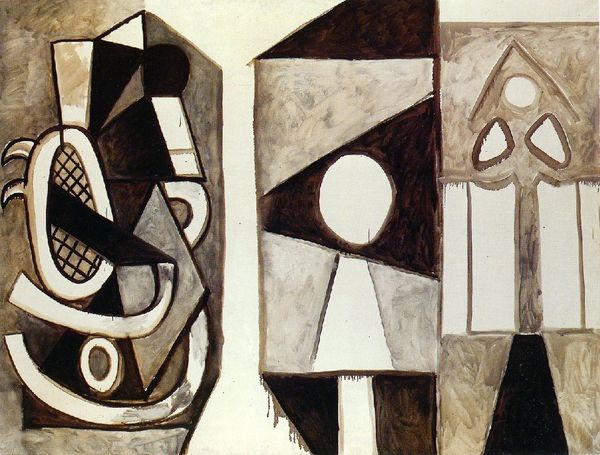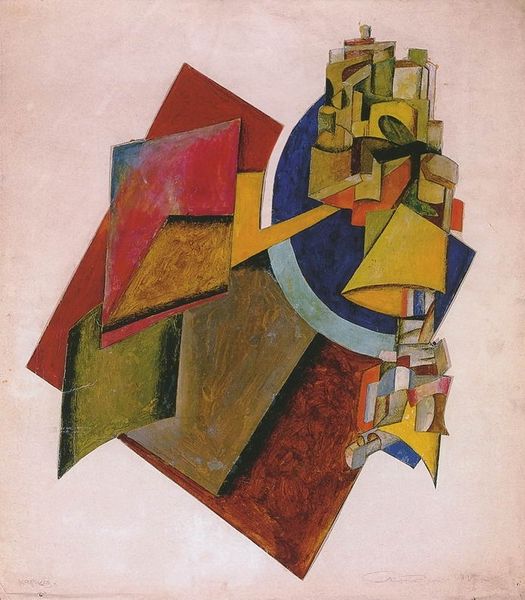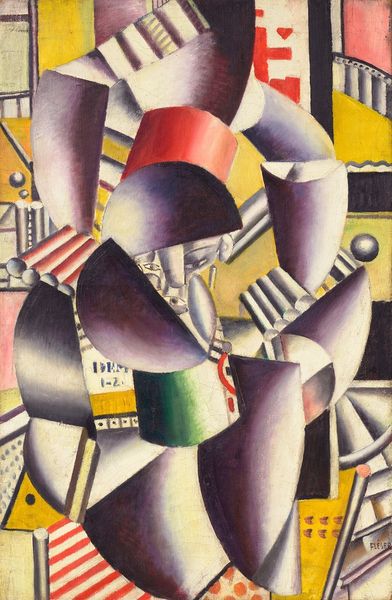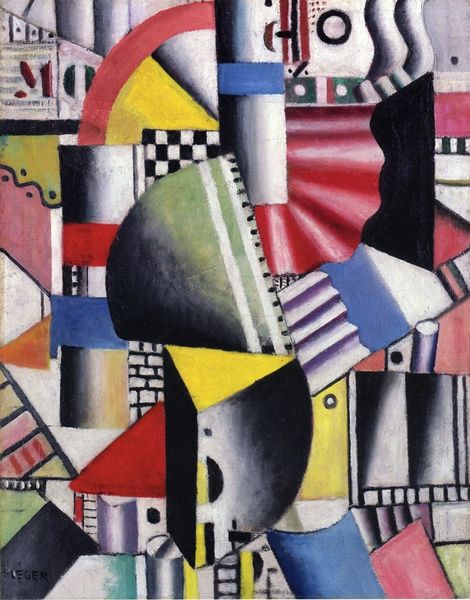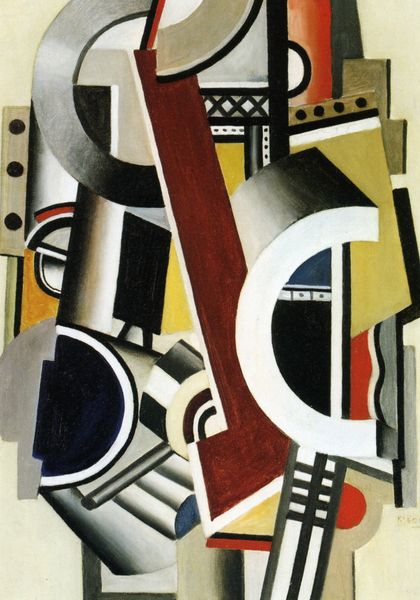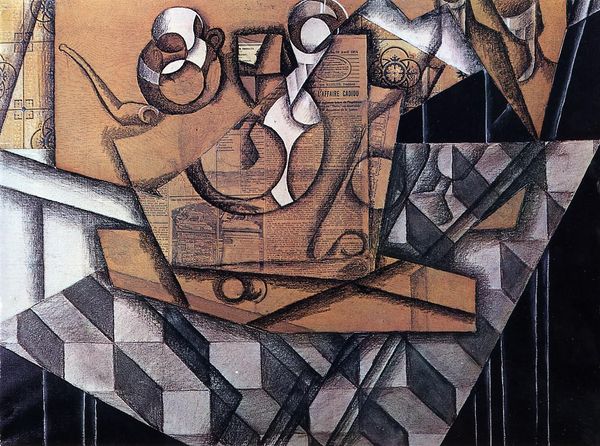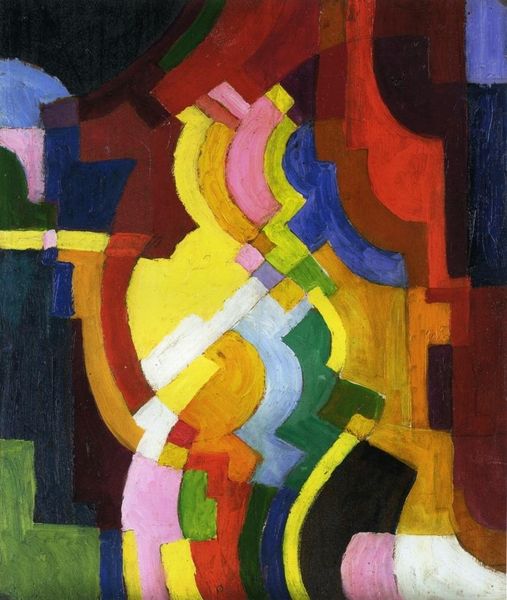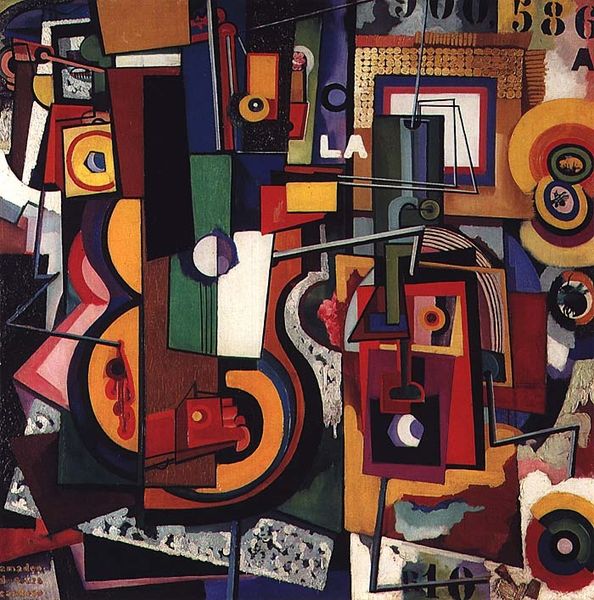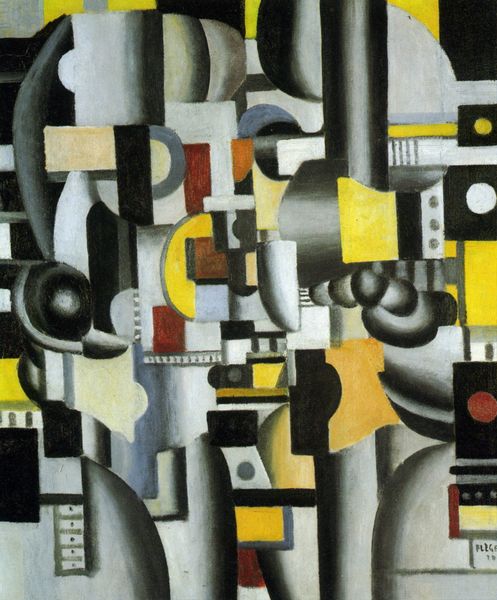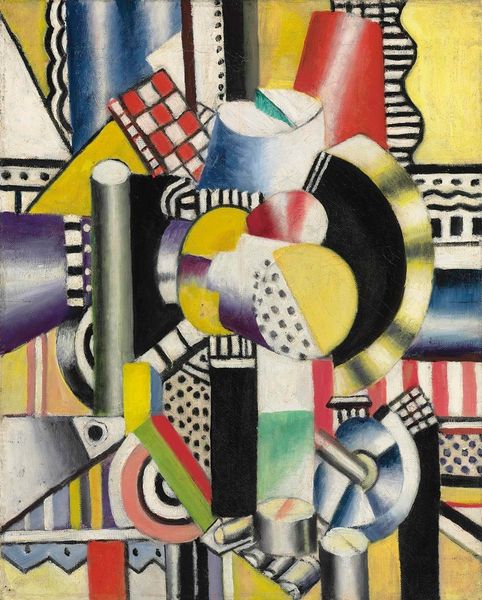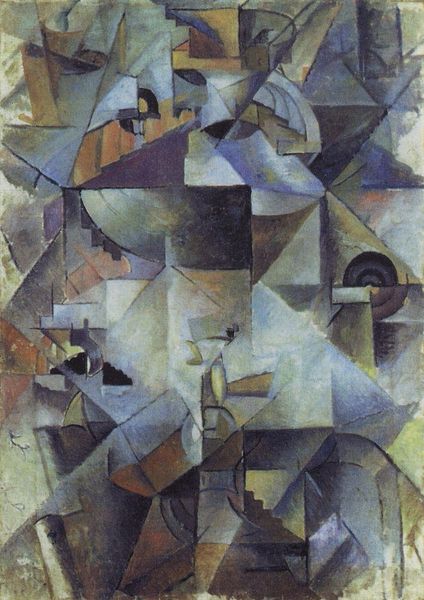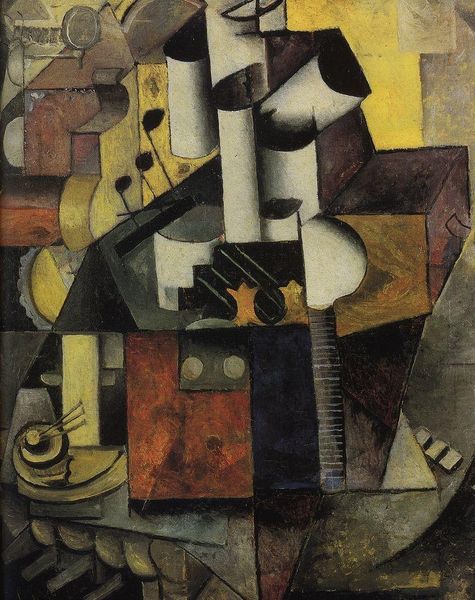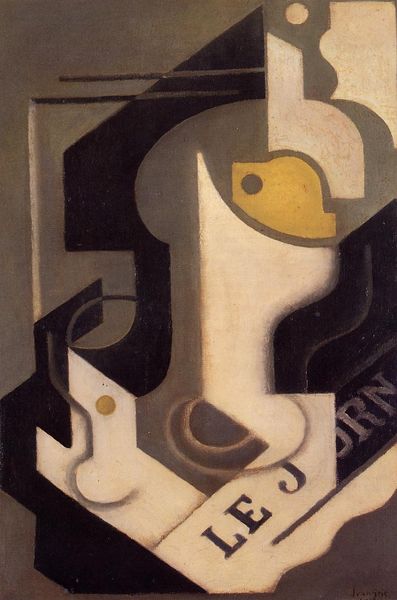
painting, oil-paint
#
cubism
#
painting
#
oil-paint
#
geometric
#
abstraction
Copyright: Public domain
Editor: Here we have Juan Gris's "Still Life on Plaque," painted in 1917 using oil paint. The overlapping geometric shapes create a really fragmented feel. What stands out to you about its composition? Curator: Its visual interest lies significantly in how Gris balances representation and abstraction. The shapes evoke objects, a cup perhaps, but they’re fragmented and reassembled on the surface. Notice how color plays a vital role; Gris limits his palette to muted greens, browns, and grays, which emphasizes the structural relationships between the shapes rather than focusing on realistic depiction. Editor: So the color palette supports the abstraction, drawing us away from identifying the objects. Does that influence how we're meant to understand it? Curator: Precisely. The reduction to essential forms invites contemplation of pure shape and color. Gris employs a sophisticated interplay of transparency and opacity. The eye moves across the painting's surface, drawn to the planar structure, guided by color and value contrasts. Editor: It's interesting how you break it down like that. Focusing purely on the composition really makes me see the painting in a totally new light. Curator: Indeed, through formal analysis, we can unlock deeper layers of understanding about the artist's intentions and the painting’s aesthetic impact. Editor: Thanks, I will use this formal lens moving forward, to understand the interplay between shape and color in similar abstract works.
Comments
No comments
Be the first to comment and join the conversation on the ultimate creative platform.
